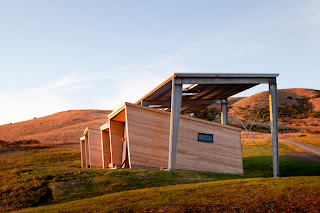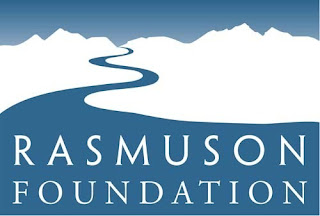Maya Angelou lived in a large house but rented a nearby
hotel room where she’d go early in the morning and start writing. She took a
dictionary, thesaurus, Bible, and a bottle of sherry with her, and forbade
anyone else from coming inside. By midday, she’d call it a wrap and leave.
Though she rented the room for a long time, she never slept there – it was
simply a place to write.
hotel room where she’d go early in the morning and start writing. She took a
dictionary, thesaurus, Bible, and a bottle of sherry with her, and forbade
anyone else from coming inside. By midday, she’d call it a wrap and leave.
Though she rented the room for a long time, she never slept there – it was
simply a place to write.
Literature is full of writing rituals – Earnest Hemingway
wrote standing up, Truman Capote wrote laying down, Victor Hugo wrote naked,
Henry Miller took long rambling walks designed to lose himself so the muse
would find him. My own writing life has definitely depended, at times, on that
mind-focusing reset that comes from a walk to the coffee shop, or a bike ride
to the library, or a drive to the only (and almost empty) bar in the next town
over from where I used to live in Montana. You pick a table, set your notebook
or laptop down, and buy a coffee, a beer, and suddenly there’s nothing left to
do but what you went there to do, what you knew you would do once you reached
the conclusion of the short, ritualized journey.
wrote standing up, Truman Capote wrote laying down, Victor Hugo wrote naked,
Henry Miller took long rambling walks designed to lose himself so the muse
would find him. My own writing life has definitely depended, at times, on that
mind-focusing reset that comes from a walk to the coffee shop, or a bike ride
to the library, or a drive to the only (and almost empty) bar in the next town
over from where I used to live in Montana. You pick a table, set your notebook
or laptop down, and buy a coffee, a beer, and suddenly there’s nothing left to
do but what you went there to do, what you knew you would do once you reached
the conclusion of the short, ritualized journey.
Alaskans are well aware of the support that the Rasmuson
Foundation has provided over the years to artists and arts organizations across
the state. The latest program in the Foundation’s Arts & Culture Initiative
is the Rasmuson
Foundation Artist Residency Program. Building on the success of a five-year
collaboration with United States Artists called AK AIR, this residency program
offers eight week long residencies to artists from the Lower 48 to come to
Alaska, and for Alaskans to go to various sites Outside. Those who have
received an Individual
Artist Award from the Rasmuson Foundation are eligible to apply for a
residency at one of the four partnering host organizations out of state.
Together, these eight organizations will host writers, visual artists,
traditional and craft artists, Alaska Native and Native American artists, and
more for the next four years.
Foundation has provided over the years to artists and arts organizations across
the state. The latest program in the Foundation’s Arts & Culture Initiative
is the Rasmuson
Foundation Artist Residency Program. Building on the success of a five-year
collaboration with United States Artists called AK AIR, this residency program
offers eight week long residencies to artists from the Lower 48 to come to
Alaska, and for Alaskans to go to various sites Outside. Those who have
received an Individual
Artist Award from the Rasmuson Foundation are eligible to apply for a
residency at one of the four partnering host organizations out of state.
Together, these eight organizations will host writers, visual artists,
traditional and craft artists, Alaska Native and Native American artists, and
more for the next four years.
Maya Angelou is certainly not the only writer, or artist in
general, to benefit from having a room of her own removed from distraction. The
Djerassi Resident Artists Program, located
near Woodside, California, has been paired in the program with our own Island Institute in Sitka, and the
two will specifically volley writers in circumstances far more generative, I
think, than any fancy hotel room across town.
general, to benefit from having a room of her own removed from distraction. The
Djerassi Resident Artists Program, located
near Woodside, California, has been paired in the program with our own Island Institute in Sitka, and the
two will specifically volley writers in circumstances far more generative, I
think, than any fancy hotel room across town.
Djerassi aims to “support
and enhance the creativity of artists by providing uninterrupted time for work,
reflection, and collegial interaction in a setting of great natural beauty.”
They have recently completed more live-work studios for writers, beautiful spaces nestled under
a photovoltaic array. On this end of the exchange, Marjorie Gellhorn Sa’adah has been selected to come to the Island
Institute.
and enhance the creativity of artists by providing uninterrupted time for work,
reflection, and collegial interaction in a setting of great natural beauty.”
They have recently completed more live-work studios for writers, beautiful spaces nestled under
a photovoltaic array. On this end of the exchange, Marjorie Gellhorn Sa’adah has been selected to come to the Island
Institute.
Not only was writer Nancy
Lord of Homer the Alaska State Writer Laureate from 2008-10, she should
probably be acknowledged as the honorary Alaska State Writing Residency Czar.
Last I heard, she’d been to at least 15 residencies in roughly as many years,
and cites them as instrumental gifts in her book writing process. (Read her own
thoughts on residencies here
and here.)
Lord of Homer the Alaska State Writer Laureate from 2008-10, she should
probably be acknowledged as the honorary Alaska State Writing Residency Czar.
Last I heard, she’d been to at least 15 residencies in roughly as many years,
and cites them as instrumental gifts in her book writing process. (Read her own
thoughts on residencies here
and here.)
Lord has been to Djerassi twice, and says that it is
particularly ideal for writers. Its “west coast feel” suits Alaskans
well, she says: “it’s informal and relaxed, not stodgy and status-driven like
some of the better-known and older east coast programs.” She goes on to say “It’s
an exceptionally beautiful place, a former ranch being restored to native
plants and wildlife, with redwood forests, open fields, dirt roads, view
(distant) of the ocean. They provide all your meals, with excellent food….
I especially like residencies like Djerassi, that involve other artists
(not just writers); I learn so much from them, about ways of seeing, thinking,
being creative.”
particularly ideal for writers. Its “west coast feel” suits Alaskans
well, she says: “it’s informal and relaxed, not stodgy and status-driven like
some of the better-known and older east coast programs.” She goes on to say “It’s
an exceptionally beautiful place, a former ranch being restored to native
plants and wildlife, with redwood forests, open fields, dirt roads, view
(distant) of the ocean. They provide all your meals, with excellent food….
I especially like residencies like Djerassi, that involve other artists
(not just writers); I learn so much from them, about ways of seeing, thinking,
being creative.”
That kind of cross-pollination speaks to the value that
artist residencies can have for all involved, including the artists themselves,
the communities they visit, and the communities where they return afterward.
artist residencies can have for all involved, including the artists themselves,
the communities they visit, and the communities where they return afterward.
Eligible Alaskans have less than two weeks to get their
applications in, which are due just as the first cohort of four artists from
Outside arrive for residencies at the Anchorage
Museum, Bunnell Street Arts Center
in Homer, UAF’s Native Art
Center in Fairbanks, and the Island Institute in Sitka. Alaskan artist selections will be made late
in October.
applications in, which are due just as the first cohort of four artists from
Outside arrive for residencies at the Anchorage
Museum, Bunnell Street Arts Center
in Homer, UAF’s Native Art
Center in Fairbanks, and the Island Institute in Sitka. Alaskan artist selections will be made late
in October.
If you have not yet received an Individual Artist Award, I
hope this new program will be an added incentive to complete and polish that
grant application and persevere. The Artist Residency Program is funded for
four years, which means there’s a very real chance that some of those who will
be selected for it down the road are not actually eligible to apply, yet, this
round. Keep writing, remind yourself of the inherent value in composing grant
applications for any program in support of your work, and celebrate the
many ways that make Alaska fertile ground for the arts.
hope this new program will be an added incentive to complete and polish that
grant application and persevere. The Artist Residency Program is funded for
four years, which means there’s a very real chance that some of those who will
be selected for it down the road are not actually eligible to apply, yet, this
round. Keep writing, remind yourself of the inherent value in composing grant
applications for any program in support of your work, and celebrate the
many ways that make Alaska fertile ground for the arts.
Jeremy Pataky is a
poet, 49 Alaska Writing Center board member, and Program Coordinator for the
Rasmuson Foundation Artist Residency Program.
poet, 49 Alaska Writing Center board member, and Program Coordinator for the
Rasmuson Foundation Artist Residency Program.


